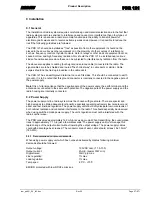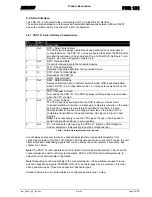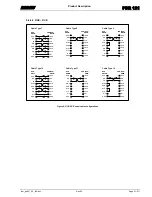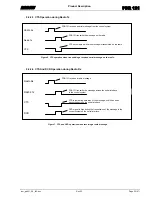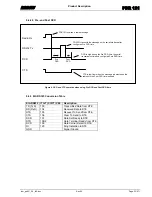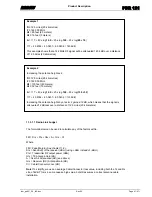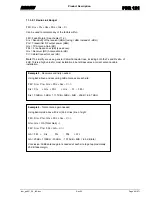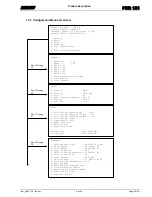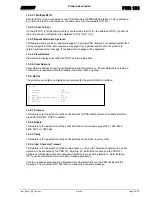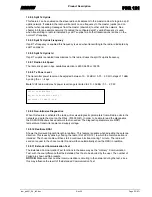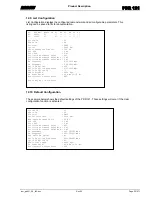
RADIUS
Product
Description
PDR 121
iom_pdr121_04_r02.doc
Rev 02
Page 40 (67)
11.3 Radio Link Calculations
This section contains some useful formulas for radio “link budget” calculations.
Note
that the
calculations are based on assumptions of certain circumstances and should only be used as a
guideline for radio network design. In reality, many factors can have an impact on the radio link.
Planning of a radio network is usually done by first simulating the network in a desktop propagation
study using a professional software package. The results are then verified by performing a field
survey.
However, the formulas below can be used to calculate if the radio link has an acceptable fade
margin or, if not, how much antenna gain that needs to be added or if repeaters have to be used.
The known factors are often:
•
The distance between two sites
•
The (possible) height of the antennas
•
The transmit power of the radio
•
The receiver sensitivity of the radio
•
The antenna gain
11.3.1 No Line of Sight Calculations
For line of sight calculations, see chapter 11.3.2.
The first calculation to be made is the propagation loss. This value tells how much the signal
strength is decreased due to the distance between the transmitter and the receiver. For this we use
the Egli model. The Egli model is a simplified model that assumes "gently rolling terrain with
average hill heights of approximately 50 feet (15 meters)" (
Land Mobile Radio Systems
, Edward N.
Singer, PTR Prentice Hall, 1994, p. 196). Because of this assumption, no terrain elevation data
between the transmitter and receiver facilities is needed. Instead, the free-space propagation loss
is adjusted for the height of the transmitter and receiver antennas above ground. As with many
other propagation models, Egli is based on measured propagation paths and then reduced to
mathematical model. In the case of Egli, the model consists of a single equation for the propagation
loss.
A
= 117 + 40 x log
D
+ 20 x log
F
– 20 x log (
Ht
x
Hr
)
Where
A
= Attenuation (dB)
D
= distance between the antennas (miles)
F
=
Frequency
(MHz)
Ht
= Height of transmitting antenna (feet)
Hr
= Height of receiving antenna (feet)
1 mile = 1610 meters = 1.61 kilometres
1 feet = 0.305 meter
Metric system users can use the formula:
A
= 117 + 40 x log (
D
x1.61
)
+ 20 x log
F
– 20 x log ((Ht
x 0.305) x (
Hr
x 0.305))
Where
D
= distance between the antennas (kilometres)
Ht
= Height of transmitting antenna (meters)
Hr
= Height of receiving antenna (meters)
.


